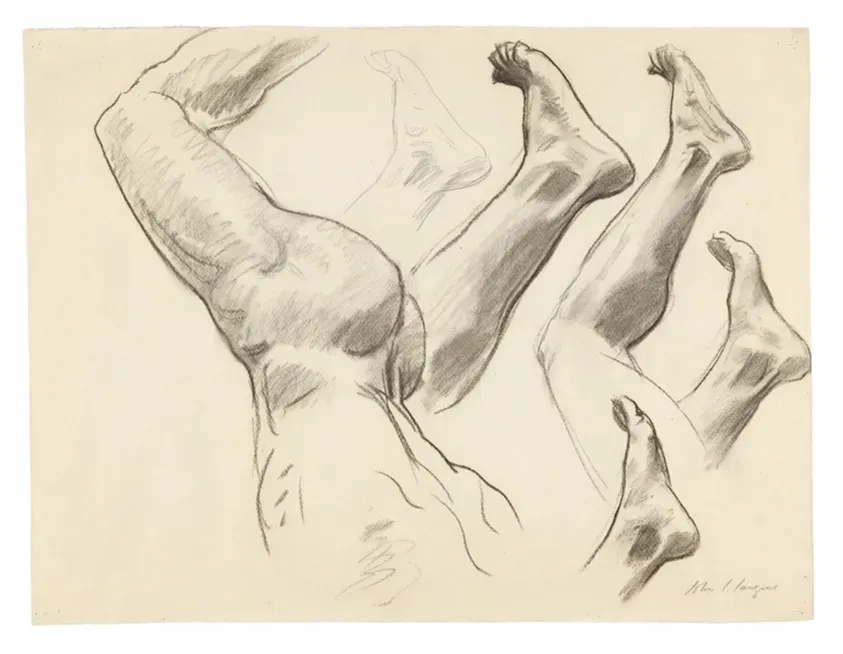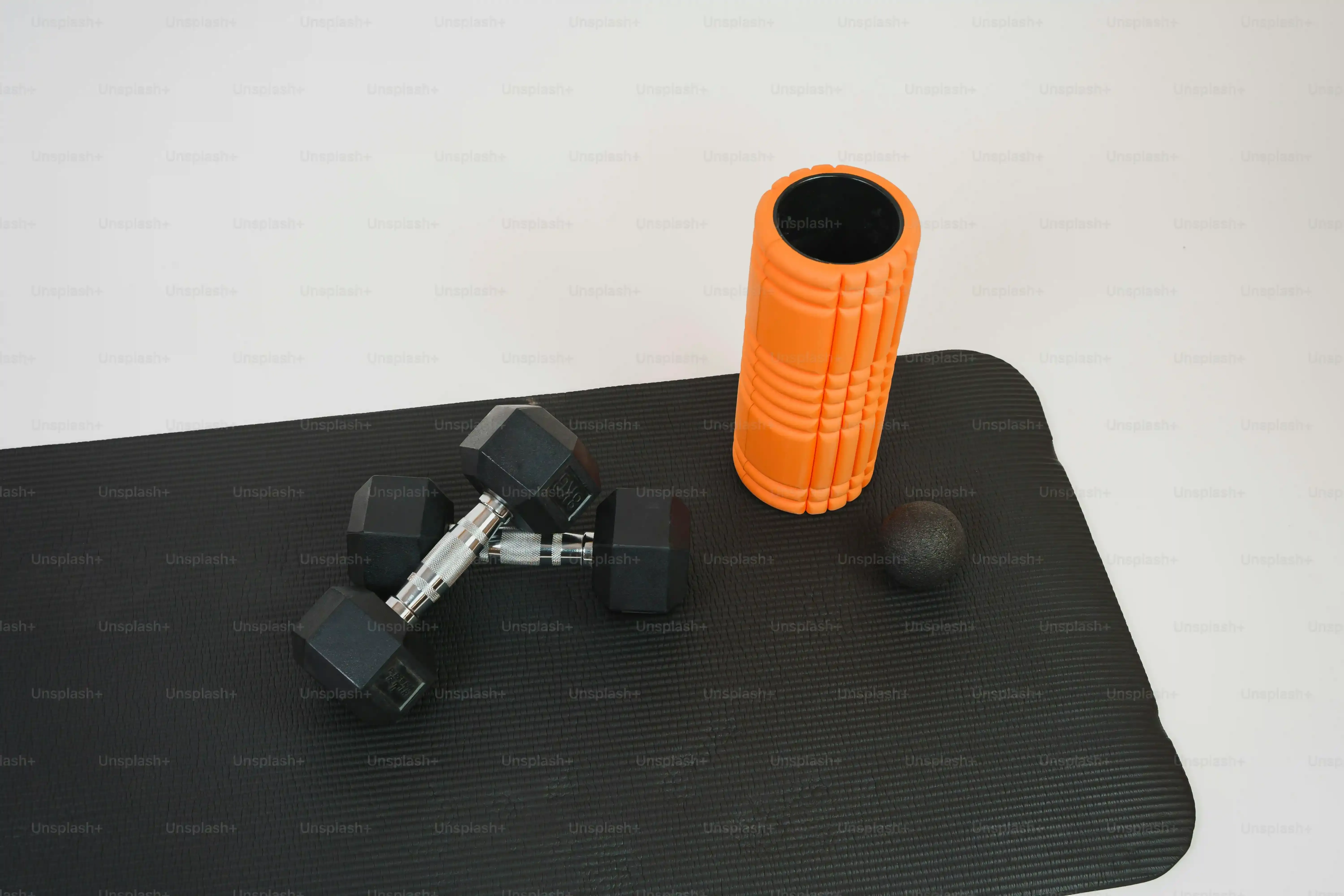Table of Contents
Tired of endless crunches that do little for your midsection and leg workouts that feel like they're missing something? You're not alone. Building truly functional strength requires hitting multiple muscle groups simultaneously, and few tools do this better than the humble kettlebell. If you're looking to forge powerful lower body strength and a rock-solid midsection, mastering thekettlebell legs and core workoutis non-negotiable.
Why Kettlebells Hit Your Legs and Core Hard

Why Kettlebells Hit Your Legs and Core Hard
It's All About That Offset Weight
Look, a barbell is balanced. Dumbbells are usually mirrored. But a kettlebell? That weight hangs below the handle, and it shifts. This isn't just some quirky design choice; it's the secret sauce. When you swing, clean, or squat with a kettlebell, that moving mass constantly pulls you off balance.
Your body has to fight like hell to stay upright and controlled. This fight isn't just happening in the big leg muscles; your core, those deep stabilizer muscles around your spine and hips, fires up intensely. It's like your midsection is in a constant state of bracing and adjusting, which is exactly how you build real-world strength that prevents injuries.
Linking Power from Ground Up
Think about moves like the kettlebell swing. It's a powerful hip hinge – all lower body drive. But that power doesn't just stop at your hips. To control the bell's momentum and prevent your back from rounding into a sad, injured mess, your core has to be locked in tight. It's the crucial link in the chain, transferring the force from your legs through your torso and into the bell.
This kinetic chain action is fundamental to functional movement. Whether you're jumping, running, or just picking up something heavy off the floor, your legs and core work together. Kettlebells train this essential partnership far more effectively than exercises that isolate one group from the other. A solidkettlebell legs and core workouttrains your body to move as one powerful unit.
How Kettlebells Challenge You Differently:
- Weight hangs below the hand
- Forces constant stabilization
- Integrates lower body power with core control
- Improves balance and coordination
- Engages smaller, stabilizing muscles
Building Stability, Not Just Size
Beyond the big, explosive moves, even static holds and slower grinds with a kettlebell demand significant core and leg stability. Holding a kettlebell in the rack position for squats or lunges forces your core to brace hard to prevent collapsing forward or sideways. Single-leg work, like a single-leg deadlift, becomes a brutal balance challenge that lights up your glutes, hamstrings, and the tiny muscles around your ankle and hip.
This focus on stability and control, rather than just lifting the heaviest weight possible, builds a resilient body. It's not just about looking strong; it's about *being* strong and capable in dynamic situations. That constant micro-adjustment required by the kettlebell is what truly carves out a strong core and stable legs.
Essential Kettlebell Exercises for Powerful Legs

Essential Kettlebell Exercises for Powerful Legs
Alright, so you're sold on the *why* behind using kettlebells for your lower half and midsection. Now, let's get down to the *how*. Building powerful legs with a kettlebell isn't about doing fancy flips; it's about mastering a few fundamental movements that leverage the bell's unique properties. These aren't just exercises; they are tools in your belt for forging strength from the ground up, hitting everything from your quads and hamstrings to those often-neglected glutes and hip stabilizers.
The Goblet Squat: Your Foundation
If there's one kettlebell exercise everyone should start with, it's the goblet squat. Holding the kettlebell at your chest forces you into a more upright posture and acts as a counterbalance, often allowing you to squat deeper with better form than with a barbell or even just bodyweight initially. It absolutely hammers your quads and glutes, but because you're holding that weight out front, your core has to work overtime just to keep you from tipping over. It’s a fantastic diagnostic tool too; if your chest collapses or your heels lift, the bell tells you immediately.
The Single Leg Deadlift: Hamstring & Balance Boss
This one might look simple, but it's deceptively brutal. The kettlebell single leg deadlift, especially holding the bell in the opposite hand of the working leg, is a masterclass in stability and posterior chain strength. Your hamstring and glute on the standing leg are screaming, yes, but your core and hip stabilizers are fighting a serious battle to keep you from wobbling like a newborn deer. It’s indispensable for fixing imbalances between your legs and building resilience in your ankles and knees. Trust me, your backside will thank you, eventually.
Key Benefits of These Leg Builders:
- Goblet Squat: Improves squat depth and posture, hits quads, glutes, and core.
- Single Leg Deadlift: Boosts hamstring and glute strength, enhances balance and stability, corrects imbalances.
- Both: Build functional strength applicable to everyday movement.
Kettlebell Swings: The Explosive Hip Hinge
yes, the swing is a full-body move, but its foundation is pure lower body power. It's all about the explosive snap of your hips, driving through your glutes and hamstrings. The legs generate the force, and the core transfers it to propel the bell forward. It’s not a squat, it’s not a deadlift – it’s a dynamic hip hinge that builds serious power in your posterior chain and teaches your body to generate force quickly. Doing them correctly requires precise timing and a locked-down core to protect your spine.
Kettlebell Lunges: Unilateral Strength & Stability
Lunges, in all their variations (forward, reverse, lateral), are gold for building unilateral leg strength – meaning strength in one leg at a time. Adding a kettlebell, whether held in the goblet position, racked on one side, or even overhead, ramps up the challenge significantly. Holding a single bell racked on one side during a lunge, for example, forces your core to brace intensely to resist rotation. It highlights asymmetries and builds robust stability through your hips and legs.
Ever tried a reverse lunge with a kettlebell racked on the *opposite* side of the stepping leg? That forces your oblique core muscles into overdrive to prevent you from twisting. It's a subtle tweak that makes a huge difference in hitting those often-untrained angles.
Forge a Solid Midsection: Kettlebell Core Builders

Forge a Solid Midsection: Kettlebell Core Builders
The Turkish Get-Up: A Core Masterclass in Motion
Forget thousands of crunches that barely scratch the surface. If you want a core that can brace against real-world forces, you need the Turkish Get-Up (TGU). This isn't just an exercise; it's a complex dance from lying on the floor to standing, all while keeping a kettlebell locked out overhead. Every single phase of the TGU demands intense core stability – anti-extension, anti-lateral flexion, anti-rotation. Your rectus abdominis, obliques, transverse abdominis, and even the deep spinal stabilizers are screaming for mercy. Mastering this single movement builds a level of core strength and body awareness that isolation exercises simply cannot replicate. It’s humbling, frustrating initially, and incredibly rewarding.
The Windmill: Side Strength and Stability
The Windmill is another kettlebell gem that specifically targets the obliques and builds rotational stability, which is crucial for preventing back pain and generating power in countless movements. With the kettlebell held overhead, you hinge at the hips, keeping the top arm straight and eyes on the bell, while the other hand reaches towards the floor. This awkward-looking move forces your side body to work overtime to stabilize the weight and control the descent and ascent. It also improves hip mobility and shoulder stability, making it a multi-tasker for your midsection and beyond. Don't rush this one; control is king.
Why These Core Moves Matter:
- Turkish Get-Up: Builds full-body tension, improves shoulder stability, enhances core strength against multiple forces.
- Windmill: Targets obliques, improves hip mobility, increases rotational stability, strengthens shoulders.
- Both: Teach your core to work as a stabilizer under load, crucial for injury prevention.
Carries: Simple, Brutal, Effective
Sometimes the most effective core work is deceptively simple. Carrying a heavy kettlebell, whether in one hand (Suitcase Carry) or both (Farmers Walk), is an incredible way to build anti-lateral flexion strength – the ability of your core to resist bending sideways. With a Suitcase Carry, the weight in one hand tries to pull you over, and your opposite-side obliques have to fire hard to keep you upright. The heavier the bell, the harder your core works. It's functional, builds grip strength, and requires zero complex coordination beyond walking in a straight line. Don't underestimate the power of just picking up a heavy bell and going for a controlled walk.
Crafting Your Kettlebell Legs and Core Workout Routine

Crafting Your Kettlebell Legs and Core Workout Routine
Picking the Right Exercises for Your Goal
so you've got the moves down. Now, how do you stitch them together into a brutal, effectivekettlebell legs and core workout? It's not just about doing random exercises until you're tired. Think about your goal. Are you chasing strength, endurance, or maybe a bit of both? For strength, focus on heavier weights and lower reps (think 3-5 sets of 3-6 reps) on exercises like Goblet Squats, Single Leg Deadlifts, and Turkish Get-Ups. If endurance is the game, lighter weights and higher reps (3-4 sets of 10-15 reps, or even time-based sets) with swings, lunges, and carries work wonders. You can also mix and match, using swings for conditioning after a strength-focused lower body session.
Don't try to do everything at once. A solid workout might focus on one or two major leg movements (like squats or lunges) and then pair them with a core-specific drill (TGU or Windmill) or use carries as a finisher. The beauty of kettlebells is their versatility, letting you build circuits that flow smoothly from one exercise to the next, keeping your heart rate up and engaging your core throughout.
Structuring Your Weekly Kettlebell Sessions
How often should you hit your legs and core with kettlebells? It depends on your overall training split and recovery. If you're doing full-body kettlebell workouts, two to three times a week is a good starting point, ensuring you have rest days in between. You could structure it as a strength day focusing on the grind-style movements (squats, TGUs) and a conditioning day emphasizing ballistic moves like swings and snatches, or simply alternate between different exercise selections each session.
Listen to your body. Kettlebell training, especially the ballistic stuff like swings, can be taxing on your grip and nervous system. Don't push through sharp pain. Focus on quality over quantity, always prioritizing form. Adding a kettlebell session focused solely on core stability and mobility, like practicing TGUs and Windmills with a lighter bell or even just your shoe balanced on your fist, can be a great active recovery day.
Example Kettlebell Legs & Core Circuit:
- Goblet Squats: 8-12 reps
- Single Arm Kettlebell Swings: 10-15 reps per side
- Suitcase Carry: 30-45 seconds per side
- Turkish Get-Up: 1-3 reps per side
- Rest 60-90 seconds. Repeat for 3-5 rounds.
Mastering Your Kettlebell Legs and Core
So, there you have it. The kettlebell isn't just another piece of gym equipment; it's a potent tool for building real-world strength where it matters most: your legs and core. We've covered why these areas are so critical and how kettlebell movements uniquely challenge them. Forget chasing isolation; focus on integration. By selecting the right exercises and putting them together smart, you can build a foundation of strength that translates far beyond the gym floor. It takes consistent effort and attention to form, but the payoff – a stronger, more resilient body – is worth the work. Pick up that bell and get after it.